-
 Bitcoin
Bitcoin $101,898.5005
-0.75% -
 Ethereum
Ethereum $2,258.1125
-1.07% -
 Tether USDt
Tether USDt $1.0004
0.01% -
 XRP
XRP $2.0178
-2.93% -
 BNB
BNB $624.0243
-1.53% -
 Solana
Solana $134.3298
-0.90% -
 USDC
USDC $0.9999
0.01% -
 TRON
TRON $0.2675
-2.05% -
 Dogecoin
Dogecoin $0.1538
-1.96% -
 Cardano
Cardano $0.5482
-1.11% -
 Hyperliquid
Hyperliquid $35.5636
5.45% -
 Bitcoin Cash
Bitcoin Cash $453.4902
-1.66% -
 Sui
Sui $2.5134
-2.97% -
 UNUS SED LEO
UNUS SED LEO $9.1292
1.77% -
 Chainlink
Chainlink $11.8457
-1.60% -
 Stellar
Stellar $0.2312
-2.73% -
 Avalanche
Avalanche $16.9721
0.29% -
 Toncoin
Toncoin $2.7549
-3.82% -
 Shiba Inu
Shiba Inu $0.0...01081
-1.10% -
 Litecoin
Litecoin $80.8250
-0.71% -
 Hedera
Hedera $0.1374
0.21% -
 Monero
Monero $305.4827
-2.36% -
 Ethena USDe
Ethena USDe $1.0006
0.00% -
 Dai
Dai $1.0000
-0.01% -
 Polkadot
Polkadot $3.2085
-3.12% -
 Bitget Token
Bitget Token $4.0845
-3.13% -
 Uniswap
Uniswap $6.3353
-1.63% -
 Pi
Pi $0.5085
-0.70% -
 Pepe
Pepe $0.0...08913
-3.82% -
 Aave
Aave $232.7090
-0.58%
What is the best way to set KDJ parameters? How to optimize parameters of different cycles?
Optimize KDJ parameters for crypto trading: short-term (5,2,1), medium-term (9,3,3), long-term (21,7,5) to match cycle sensitivity and reduce false signals.
May 24, 2025 at 06:01 am
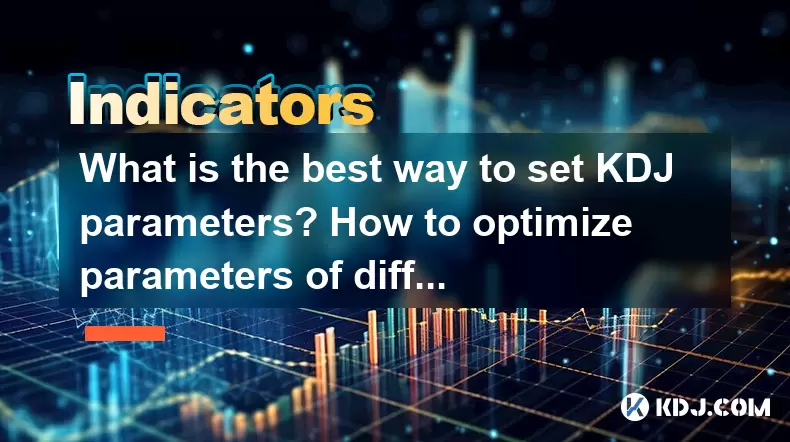
The KDJ indicator, also known as the Stochastic Oscillator, is a popular technical analysis tool used in the cryptocurrency market to identify potential trend reversals and overbought/oversold conditions. To effectively use the KDJ indicator, it's essential to understand how to set its parameters and optimize them for different trading cycles. This article will guide you through the process of setting KDJ parameters and optimizing them for various cycles.
Understanding KDJ Parameters
The KDJ indicator consists of three lines: K, D, and J. The parameters that you need to set for the KDJ indicator are the %K period, %D period, and the smoothing period. These parameters determine the sensitivity and the lag of the indicator.
- %K period: This is the number of periods used to calculate the %K line. A shorter %K period makes the indicator more sensitive to price changes, while a longer period smooths out the indicator's movements.
- %D period: This is the number of periods used to calculate the %D line, which is a moving average of the %K line. A shorter %D period results in a more responsive %D line, whereas a longer period smooths it out.
- Smoothing period: This parameter applies additional smoothing to the %K line before calculating the %D line. It helps reduce noise and false signals.
Setting Default KDJ Parameters
For most trading platforms, the default KDJ parameters are set as follows:
- %K period: 9
- %D period: 3
- Smoothing period: 3
These default settings are suitable for many traders, but they may not be optimal for all trading strategies and timeframes. To find the best settings, you need to understand how to optimize these parameters for different cycles.
Optimizing KDJ Parameters for Short-Term Cycles
Short-term cycles, such as those within a few hours to a few days, require more responsive indicators. To optimize the KDJ parameters for short-term cycles:
- Reduce the %K period: A shorter %K period, such as 5 or 7, will make the KDJ indicator more sensitive to price movements. This can help you identify overbought and oversold conditions more quickly.
- Adjust the %D period: A shorter %D period, such as 2 or 3, will make the %D line more responsive to changes in the %K line. This can help you confirm signals faster.
- Keep the smoothing period low: A low smoothing period, such as 1 or 2, will minimize the lag and make the indicator more responsive to short-term price changes.
Here's how you can set these parameters in most trading platforms:
- Open your trading platform and navigate to the indicators section.
- Select the KDJ indicator from the list of available indicators.
- In the settings window, adjust the %K period to 5, the %D period to 2, and the smoothing period to 1.
- Apply the changes and observe the KDJ indicator on your chart.
Optimizing KDJ Parameters for Medium-Term Cycles
Medium-term cycles, such as those within a few days to a few weeks, require a balance between sensitivity and smoothing. To optimize the KDJ parameters for medium-term cycles:
- Use a moderate %K period: A %K period of 9 or 14 is suitable for medium-term cycles. This will provide a good balance between sensitivity and smoothing.
- Adjust the %D period: A %D period of 3 or 5 will help smooth out the %D line while still providing timely signals.
- Increase the smoothing period: A smoothing period of 3 or 5 will help reduce noise and false signals, making the indicator more reliable for medium-term trading.
To set these parameters:
- Open your trading platform and navigate to the indicators section.
- Select the KDJ indicator from the list of available indicators.
- In the settings window, adjust the %K period to 9, the %D period to 3, and the smoothing period to 3.
- Apply the changes and observe the KDJ indicator on your chart.
Optimizing KDJ Parameters for Long-Term Cycles
Long-term cycles, such as those spanning weeks to months, require more smoothing to filter out short-term noise. To optimize the KDJ parameters for long-term cycles:
- Increase the %K period: A longer %K period, such as 21 or 28, will smooth out the KDJ indicator and make it less sensitive to short-term price fluctuations.
- Increase the %D period: A longer %D period, such as 7 or 10, will further smooth the %D line and reduce false signals.
- Increase the smoothing period: A higher smoothing period, such as 5 or 7, will help filter out noise and provide more reliable signals for long-term trading.
To set these parameters:
- Open your trading platform and navigate to the indicators section.
- Select the KDJ indicator from the list of available indicators.
- In the settings window, adjust the %K period to 21, the %D period to 7, and the smoothing period to 5.
- Apply the changes and observe the KDJ indicator on your chart.
Testing and Refining KDJ Parameters
Once you have set your KDJ parameters for different cycles, it's crucial to test and refine them to ensure they work well with your trading strategy. Here are some steps to follow:
- Backtest your settings: Use historical data to backtest your KDJ settings and see how they perform over different market conditions. This will help you identify any weaknesses in your parameters.
- Monitor performance: Keep track of the performance of your KDJ settings in real-time trading. Adjust the parameters as needed based on the results you observe.
- Compare different settings: Experiment with different combinations of %K, %D, and smoothing periods to find the optimal settings for your specific trading style and timeframe.
Using KDJ in Conjunction with Other Indicators
While the KDJ indicator can be a powerful tool on its own, it's often more effective when used in conjunction with other indicators. Here are some popular combinations:
- KDJ and Moving Averages: Use the KDJ indicator to identify potential entry and exit points, and use moving averages to confirm the overall trend direction.
- KDJ and RSI: Combine the KDJ with the Relative Strength Index (RSI) to confirm overbought and oversold conditions. When both indicators show the same signal, it can be a stronger indication of a potential trend reversal.
- KDJ and MACD: Use the KDJ to identify short-term opportunities, and use the Moving Average Convergence Divergence (MACD) to confirm longer-term trends.
To use these combinations effectively:
- Add the KDJ indicator to your chart with the optimized parameters for your chosen cycle.
- Add the additional indicator (e.g., moving averages, RSI, or MACD) to your chart.
- Observe how the KDJ indicator interacts with the other indicator to identify potential trading opportunities.
Frequently Asked Questions
Q: Can KDJ parameters be the same for different cryptocurrencies?
A: While the basic principles of setting KDJ parameters remain the same, different cryptocurrencies may have different volatility and price patterns. It's advisable to test and optimize the KDJ parameters for each cryptocurrency you trade to ensure the best performance.
Q: How often should I adjust my KDJ parameters?
A: The frequency of adjusting KDJ parameters depends on your trading style and the market conditions. For short-term traders, you might need to adjust parameters more frequently to adapt to changing market dynamics. For long-term traders, less frequent adjustments may be sufficient. Regular backtesting and monitoring of performance can help you determine when adjustments are needed.
Q: Is the KDJ indicator suitable for all types of cryptocurrency trading?
A: The KDJ indicator can be useful for various types of cryptocurrency trading, including day trading, swing trading, and even long-term investing. However, its effectiveness can vary depending on the specific trading strategy and timeframe. It's essential to combine the KDJ with other indicators and analysis methods to increase its reliability.
Q: Can I use the KDJ indicator for automated trading systems?
A: Yes, the KDJ indicator can be incorporated into automated trading systems. Many trading platforms and programming languages support the use of KDJ as part of algorithmic trading strategies. When using KDJ in automated systems, it's crucial to thoroughly backtest and optimize the parameters to ensure the system performs well under various market conditions.
Disclaimer:info@kdj.com
The information provided is not trading advice. kdj.com does not assume any responsibility for any investments made based on the information provided in this article. Cryptocurrencies are highly volatile and it is highly recommended that you invest with caution after thorough research!
If you believe that the content used on this website infringes your copyright, please contact us immediately (info@kdj.com) and we will delete it promptly.
- Bitcoin Price Wobbles: Crash Watch and Key Support Levels
- 2025-06-23 16:25:12
- Navigating the Crypto Seas: Charting a Course Through Bull Runs and Bear Markets
- 2025-06-23 16:25:12
- BNB Price Check: Stablecoin Surge vs. Prediction Rollercoaster
- 2025-06-23 14:25:12
- Metaplanet's Bitcoin Bonanza: Holdings Skyrocket Amidst Market Swings
- 2025-06-23 14:25:12
- Global Meltdown, Investors, and Safe Havens: Navigating the Storm
- 2025-06-23 14:30:12
- NFT Sales Snapshot: Guild of Heroes, Polygon, and the Market's Shifting Sands
- 2025-06-23 15:25:12
Related knowledge

How much volume is required for the W-bottom to break through the neckline of the time-sharing chart?
Jun 23,2025 at 04:21pm
Understanding the W-Bottom Pattern in Cryptocurrency TradingThe W-bottom pattern is a popular technical analysis formation used by traders to identify potential bullish reversals. It typically appears at the end of a downtrend and resembles the letter 'W' on price charts. In the context of cryptocurrency trading, where volatility is high and trends shif...

How to read the sideways consolidation after the bottom volume and long positive line?
Jun 23,2025 at 02:28pm
Understanding the Sideways ConsolidationWhen analyzing cryptocurrency charts, sidewards consolidation refers to a phase where prices move within a narrow range without a clear upward or downward trend. This pattern often appears after significant price movements, such as a sharp increase followed by a period of equilibrium between buyers and sellers. In...
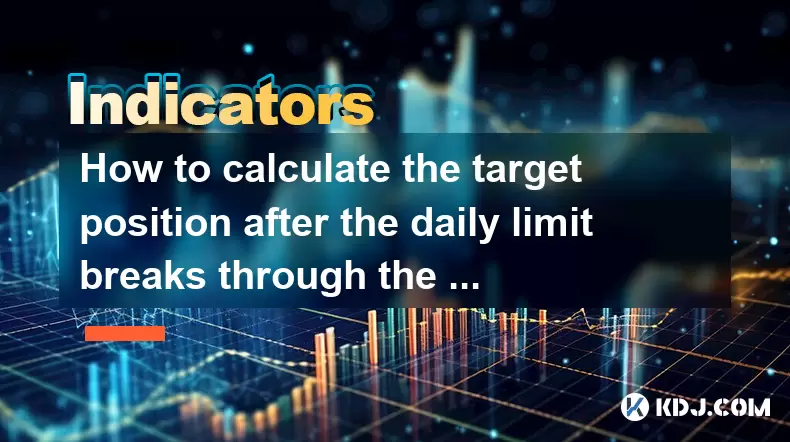
How to calculate the target position after the daily limit breaks through the previous high?
Jun 23,2025 at 02:57pm
Understanding the Daily Limit BreakthroughIn cryptocurrency trading, a daily limit typically refers to the maximum price movement allowed within a single trading day on certain exchanges. When this limit is breached, especially when it surpasses the previous high, traders often seek to calculate the target position or expected price movement following s...
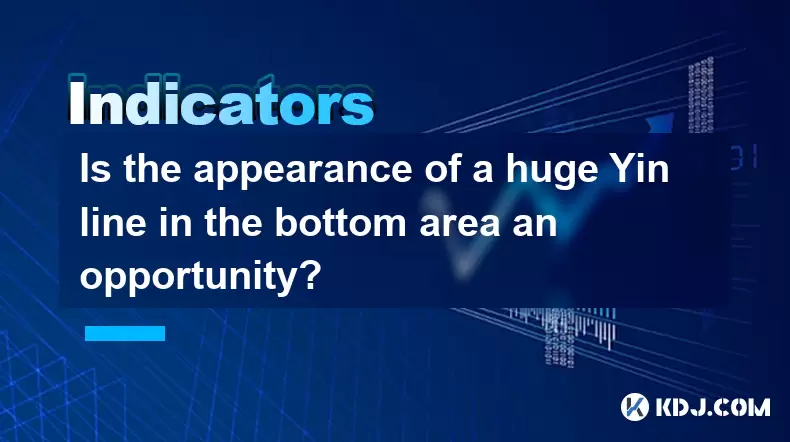
Is the appearance of a huge Yin line in the bottom area an opportunity?
Jun 23,2025 at 04:07pm
Understanding the Meaning of a Huge Yin LineIn technical analysis within the cryptocurrency market, a huge Yin line is often interpreted as a strong bearish signal. It indicates that sellers have dominated the market over a specific period, pushing prices significantly downward. When this occurs in what appears to be a bottom area, traders might questio...
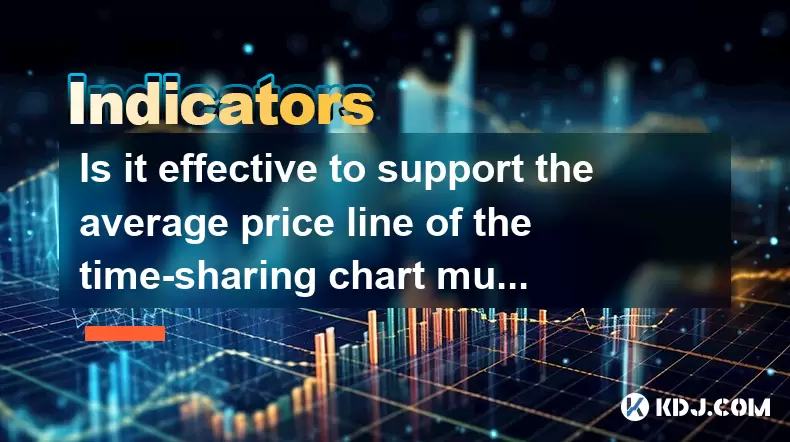
Is it effective to support the average price line of the time-sharing chart multiple times?
Jun 23,2025 at 01:36pm
Understanding the Average Price Line in Time-Sharing ChartsIn cryptocurrency trading, time-sharing charts refer to real-time price charts that display price movements over short intervals, often within a single trading day. Within these charts, the average price line, also known as the Volume Weighted Average Price (VWAP), is a commonly used technical i...
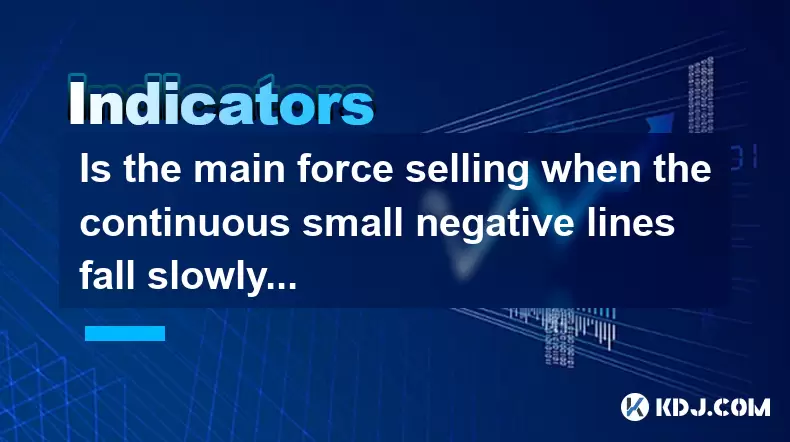
Is the main force selling when the continuous small negative lines fall slowly?
Jun 23,2025 at 03:35pm
Understanding Continuous Small Negative Lines in Cryptocurrency ChartsIn cryptocurrency trading, continuous small negative lines refer to a pattern where the price of an asset declines gradually over time with small bearish candlesticks. These candlesticks typically have short bodies and may or may not have wicks. This pattern often appears during perio...

How much volume is required for the W-bottom to break through the neckline of the time-sharing chart?
Jun 23,2025 at 04:21pm
Understanding the W-Bottom Pattern in Cryptocurrency TradingThe W-bottom pattern is a popular technical analysis formation used by traders to identify potential bullish reversals. It typically appears at the end of a downtrend and resembles the letter 'W' on price charts. In the context of cryptocurrency trading, where volatility is high and trends shif...

How to read the sideways consolidation after the bottom volume and long positive line?
Jun 23,2025 at 02:28pm
Understanding the Sideways ConsolidationWhen analyzing cryptocurrency charts, sidewards consolidation refers to a phase where prices move within a narrow range without a clear upward or downward trend. This pattern often appears after significant price movements, such as a sharp increase followed by a period of equilibrium between buyers and sellers. In...

How to calculate the target position after the daily limit breaks through the previous high?
Jun 23,2025 at 02:57pm
Understanding the Daily Limit BreakthroughIn cryptocurrency trading, a daily limit typically refers to the maximum price movement allowed within a single trading day on certain exchanges. When this limit is breached, especially when it surpasses the previous high, traders often seek to calculate the target position or expected price movement following s...

Is the appearance of a huge Yin line in the bottom area an opportunity?
Jun 23,2025 at 04:07pm
Understanding the Meaning of a Huge Yin LineIn technical analysis within the cryptocurrency market, a huge Yin line is often interpreted as a strong bearish signal. It indicates that sellers have dominated the market over a specific period, pushing prices significantly downward. When this occurs in what appears to be a bottom area, traders might questio...

Is it effective to support the average price line of the time-sharing chart multiple times?
Jun 23,2025 at 01:36pm
Understanding the Average Price Line in Time-Sharing ChartsIn cryptocurrency trading, time-sharing charts refer to real-time price charts that display price movements over short intervals, often within a single trading day. Within these charts, the average price line, also known as the Volume Weighted Average Price (VWAP), is a commonly used technical i...

Is the main force selling when the continuous small negative lines fall slowly?
Jun 23,2025 at 03:35pm
Understanding Continuous Small Negative Lines in Cryptocurrency ChartsIn cryptocurrency trading, continuous small negative lines refer to a pattern where the price of an asset declines gradually over time with small bearish candlesticks. These candlesticks typically have short bodies and may or may not have wicks. This pattern often appears during perio...
See all articles
























































































